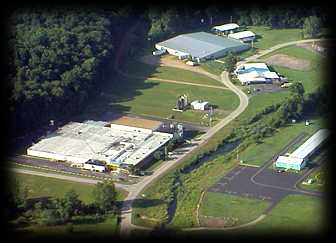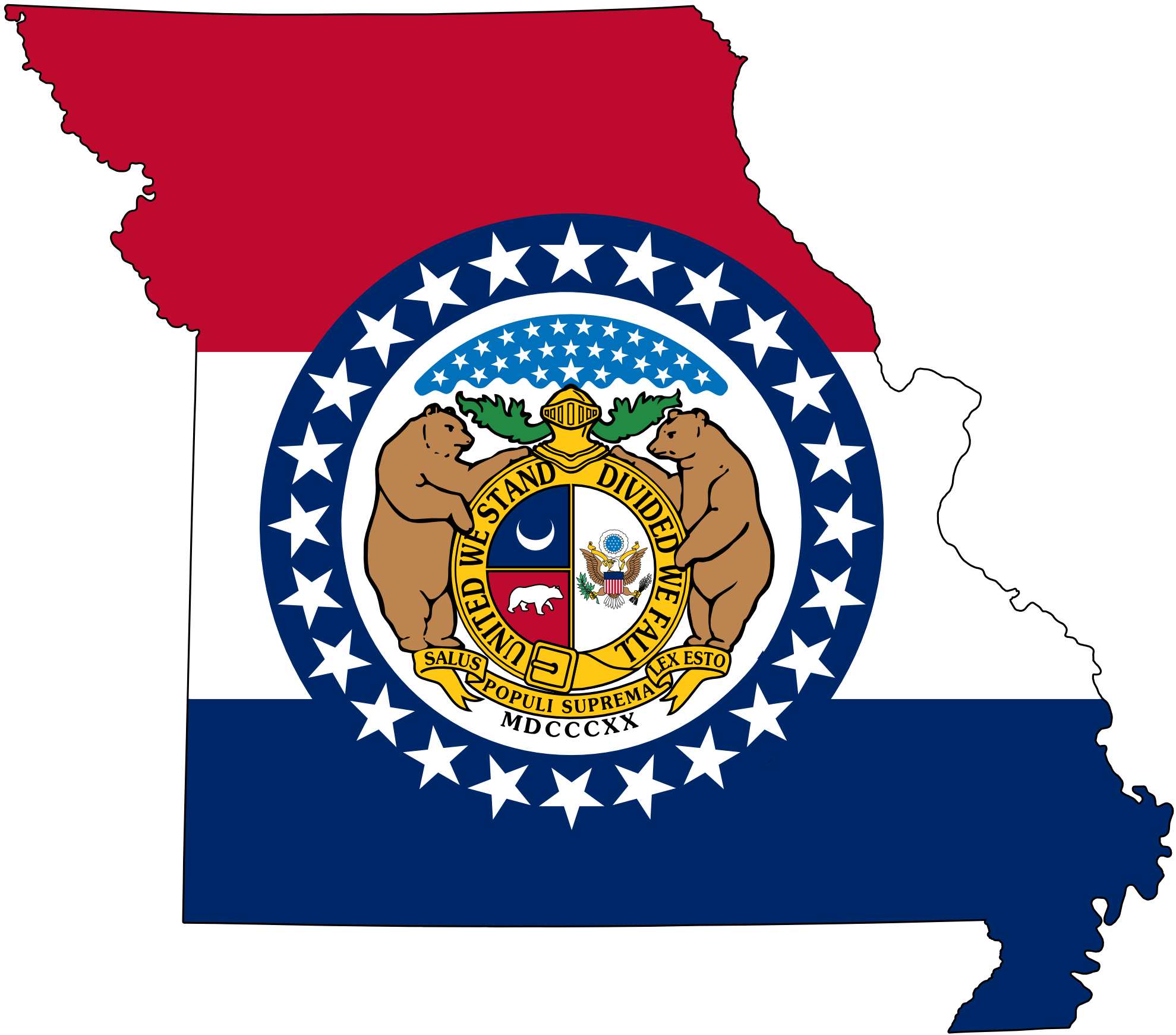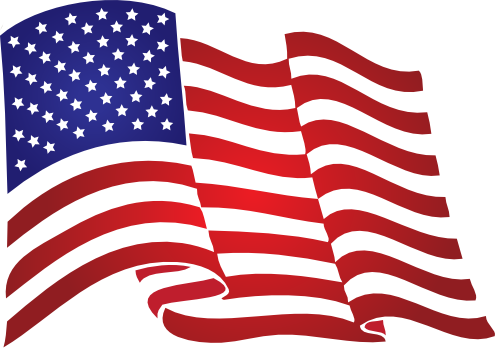Piedmont Enterprise Zone
Who qualifies?
Any new or expanding businesses creating and maintaining 2 new jobs and $100,000 new investment in one of Missouri's Enterprise Zones. For tax periods beginning after December 31, 1995, eligible activities (determined by a company's Standard Industrial Classification; SIC) include those listed under the new/expanding business facility credit, as well as renting residential property to low/moderate persons, employment agencies, computer programming/data processing services, commercial banks and savings institutions and health services. Retailers are eligible only in state enterprise zones in which a federal enterprise community is located.
What are the Benefits?
(1) new job credit of $400 per job; AND
(2) zone resident credit of $400 per 365 days of employee residency; AND
(3) Special employee credit of $400 per 365 days of employment; AND
(4) training credit of 80% over $400 up to $400 per employee trained; AND
* if 30% of new employees meet additional criteria, then 5 and 6 apply...
(5) investment credit of $5,500 plus 2% of new investment over $100,00; AND
(6) up to 50% income exemption; AND
(7) a property tax abatement of at least 50% for 10 years on improvements to
real property used for manufacturing, wholesale distribution, warehousing,
or mining; AND
(8) 50% up to $50,000 refund of unused credits earned year 1 by new facilities
payable year 3; AND
(9) 25% up to $25,000 refund of unused credits earned year 2 by new facilities
payable year 4.
How are they used?
The credits offset up to 100% of the business income or financial institutional tax liability for up to 10 tax years and are claimed for the year they are earned.
Who qualifies?
Any new or expanding businesses creating and maintaining 2 new jobs and $100,000 new investment in one of Missouri's Enterprise Zones. For tax periods beginning after December 31, 1995, eligible activities (determined by a company's Standard Industrial Classification; SIC) include those listed under the new/expanding business facility credit, as well as renting residential property to low/moderate persons, employment agencies, computer programming/data processing services, commercial banks and savings institutions and health services. Retailers are eligible only in state enterprise zones in which a federal enterprise community is located.
What are the Benefits?
(1) new job credit of $400 per job; AND
(2) zone resident credit of $400 per 365 days of employee residency; AND
(3) Special employee credit of $400 per 365 days of employment; AND
(4) training credit of 80% over $400 up to $400 per employee trained; AND
* if 30% of new employees meet additional criteria, then 5 and 6 apply...
(5) investment credit of $5,500 plus 2% of new investment over $100,00; AND
(6) up to 50% income exemption; AND
(7) a property tax abatement of at least 50% for 10 years on improvements to
real property used for manufacturing, wholesale distribution, warehousing,
or mining; AND
(8) 50% up to $50,000 refund of unused credits earned year 1 by new facilities
payable year 3; AND
(9) 25% up to $25,000 refund of unused credits earned year 2 by new facilities
payable year 4.
How are they used?
The credits offset up to 100% of the business income or financial institutional tax liability for up to 10 tax years and are claimed for the year they are earned.
Enterprise Zone
& other tax credits and abatements...
& other tax credits and abatements...
New or Expanding Business Facility Tax Credits
Who Qualifies?
For tax periods beginning after December 31, 1995, this tax credit can be earned by:
(1) a new or expanding manufacturer, wholesale distributor, warehouseman, research and development facility, mining operator, inter exchange telecommunications company facility, barge, rail or truck terminal operator, poultry/egg producer, farm implement retailer, or recycling operator who creates a minimum of two new jobs and $100,00 of new investment; AND
(2) a new or expanding office tenant who creates a minimum of $100,00 of new investment, and 25 new jobs. Office activities are limited to a headquarters, telemarketing, computer operation, insurance company, passenger transportation, ticket system, or credit card billing/processing center. Eligibility is determined by a company's SIC.
What is the Credit?
(1) $75 per new job AND $75 per $100,000 new investment for companies new to Missouri; OR
(2) $100 per new job AND $100 per $100,000 new investment for existing Missouri companies.
How is it used?
The credit offsets up to 100% of the business income tax liability and is claimed for the year it was earned.
How long does the credit last?
10 tax years - the credits are calculated each tax year and may go up or down depending on job and investment levels.
Who Qualifies?
For tax periods beginning after December 31, 1995, this tax credit can be earned by:
(1) a new or expanding manufacturer, wholesale distributor, warehouseman, research and development facility, mining operator, inter exchange telecommunications company facility, barge, rail or truck terminal operator, poultry/egg producer, farm implement retailer, or recycling operator who creates a minimum of two new jobs and $100,00 of new investment; AND
(2) a new or expanding office tenant who creates a minimum of $100,00 of new investment, and 25 new jobs. Office activities are limited to a headquarters, telemarketing, computer operation, insurance company, passenger transportation, ticket system, or credit card billing/processing center. Eligibility is determined by a company's SIC.
What is the Credit?
(1) $75 per new job AND $75 per $100,000 new investment for companies new to Missouri; OR
(2) $100 per new job AND $100 per $100,000 new investment for existing Missouri companies.
How is it used?
The credit offsets up to 100% of the business income tax liability and is claimed for the year it was earned.
How long does the credit last?
10 tax years - the credits are calculated each tax year and may go up or down depending on job and investment levels.
Neighborhood Assistance Tax Credits
Who Qualifies?
Any individual or company doing business in Missouri who contributes funds or qualified resources to approved neighborhood assistance projects.
What is an approved project?
Any type of community development program which improves the neighborhood by community services, crime prevention, education, job training, economic development, assistance to the homeless, or neighborhood assistance such as revitalization.
What is the Credit?
The credit normally equals 50% of the contribution amount, or 70% if the project is located in a rural community. the contribution may not exceed $250,000, except in economically distressed areas of the state.
How is it used?
The credits offset these taxes in the following order:
(1) financial institution and insurance company tax;
(2) corporate franchise tax; (3) state income tax; AND
(4) express company tax
How long does the credit last?
The credit is claimed for the tax year the contribution was made, and may be carried forward up to 5 additional tax years.
Who Qualifies?
Any individual or company doing business in Missouri who contributes funds or qualified resources to approved neighborhood assistance projects.
What is an approved project?
Any type of community development program which improves the neighborhood by community services, crime prevention, education, job training, economic development, assistance to the homeless, or neighborhood assistance such as revitalization.
What is the Credit?
The credit normally equals 50% of the contribution amount, or 70% if the project is located in a rural community. the contribution may not exceed $250,000, except in economically distressed areas of the state.
How is it used?
The credits offset these taxes in the following order:
(1) financial institution and insurance company tax;
(2) corporate franchise tax; (3) state income tax; AND
(4) express company tax
How long does the credit last?
The credit is claimed for the tax year the contribution was made, and may be carried forward up to 5 additional tax years.
Seed Capital Tax Credits
Who Qualifies?
Any person or business making a cash contribution to a qualified seed capital fund.
What is a qualified fund?
A fund established to make investments in commercial seed capital activities such as research and development, or start-up capital for use in product or service development, or follow-up capital for such products or services.
What is the credit?
The credit is equal to 30% of the contribution amount, AND the contributor shares in the distribution of the fund earnings.
How is it used?
The credit offsets state income, financial institution, and corporate franchise tax liability, and may be transferred or sold.
How long does the credit last?
The credit is used to offset tax liabilities that become due in the tax year the qualified investment was made, and may be carried forward up to 10 additional tax years.
Who Qualifies?
Any person or business making a cash contribution to a qualified seed capital fund.
What is a qualified fund?
A fund established to make investments in commercial seed capital activities such as research and development, or start-up capital for use in product or service development, or follow-up capital for such products or services.
What is the credit?
The credit is equal to 30% of the contribution amount, AND the contributor shares in the distribution of the fund earnings.
How is it used?
The credit offsets state income, financial institution, and corporate franchise tax liability, and may be transferred or sold.
How long does the credit last?
The credit is used to offset tax liabilities that become due in the tax year the qualified investment was made, and may be carried forward up to 10 additional tax years.
Development & Reserve, Infrastructure Development and Export Finance Tax Credits
Who Qualifies?
Any person or business making a contribution to the Development and Reserve Fund, the Infrastructure Development Fund, or the Export Financial Fund.
How are the fund contributions used?
Contributions are used for direct loans, loan guarantees, and grants to new and expanding businesses, nonprofit organizations, and public entity projects which benefit the economy or infrastructure of Missouri, and encourage the exportation of Missouri goods and services.
What is the credit?
The credit is equal to 50% of the contribution amount.
How is it used?
The credit offsets state income, corporate franchise, or financial institution tax liability, and may be transferred or sold.
How long does the credit last?
The credit is claimed for the tax year the contribution was made, and may be carried forward up to 5 additional tax years.
Who Qualifies?
Any person or business making a contribution to the Development and Reserve Fund, the Infrastructure Development Fund, or the Export Financial Fund.
How are the fund contributions used?
Contributions are used for direct loans, loan guarantees, and grants to new and expanding businesses, nonprofit organizations, and public entity projects which benefit the economy or infrastructure of Missouri, and encourage the exportation of Missouri goods and services.
What is the credit?
The credit is equal to 50% of the contribution amount.
How is it used?
The credit offsets state income, corporate franchise, or financial institution tax liability, and may be transferred or sold.
How long does the credit last?
The credit is claimed for the tax year the contribution was made, and may be carried forward up to 5 additional tax years.
Small Business Incubator Fund Tax Credits
Who Qualifies?
Any person or business making a contribution to an approved small business incubator project, local sponsor or fund.
How are the contributions used?
Contributions are used to make loans and loan guarantees to small business incubator sponsors for the purpose of acquiring land, building, equipment and furnishings that are necessary to establish an incubator.
What is the credit?
the credit is equal to 50% of the contribution amount.
How is it used?
The credit offsets state income, corporate franchise, or financial institution tax liability, and may be transferred or sold.
How long does the credit last?
The credit is claimed for the tax year contribution was made, and may be carried forward up to 5 additional tax years.
Who Qualifies?
Any person or business making a contribution to an approved small business incubator project, local sponsor or fund.
How are the contributions used?
Contributions are used to make loans and loan guarantees to small business incubator sponsors for the purpose of acquiring land, building, equipment and furnishings that are necessary to establish an incubator.
What is the credit?
the credit is equal to 50% of the contribution amount.
How is it used?
The credit offsets state income, corporate franchise, or financial institution tax liability, and may be transferred or sold.
How long does the credit last?
The credit is claimed for the tax year contribution was made, and may be carried forward up to 5 additional tax years.
Small Business Investment (Capital) Tax Credits
Who Qualifies?
An investor who makes an investment in a Missouri small business or community bank.
What is a Missouri Small Business?
The business receiving the investment must be a manufacturer, research/development operator, or provide services in interstate commerce; have annual revenues of $2,000,000 or less; and have 100 or less employees with 80% employed in Missouri.
What is a community bank?
An entity that receives investments from commercial financial institutions, and makes loans to or invests in businesses, especially those located in economically distressed areas.
How is the qualified investment used?
The investment must be spent for capital expenditures, plant, equipment, research and development, working capital, or any other purpose approved by the Department of Economic Development if used by a Missouri small business. Usage by a community bank is not restricted.
What is the credit?
The credit is equal to 30% of the qualified investment made to a Missouri small business; 40% if made to a community bank.
How is it used?
The credit offsets state income, corporate franchise, financial institution, or express company tax liability, and it may be transferred or sold.
How long does the credit last?
The credit is used to offset tax liabilities that become due in the tax year the qualified investment was made and may be carried forward up to 10 additional tax years.
Who Qualifies?
An investor who makes an investment in a Missouri small business or community bank.
What is a Missouri Small Business?
The business receiving the investment must be a manufacturer, research/development operator, or provide services in interstate commerce; have annual revenues of $2,000,000 or less; and have 100 or less employees with 80% employed in Missouri.
What is a community bank?
An entity that receives investments from commercial financial institutions, and makes loans to or invests in businesses, especially those located in economically distressed areas.
How is the qualified investment used?
The investment must be spent for capital expenditures, plant, equipment, research and development, working capital, or any other purpose approved by the Department of Economic Development if used by a Missouri small business. Usage by a community bank is not restricted.
What is the credit?
The credit is equal to 30% of the qualified investment made to a Missouri small business; 40% if made to a community bank.
How is it used?
The credit offsets state income, corporate franchise, financial institution, or express company tax liability, and it may be transferred or sold.
How long does the credit last?
The credit is used to offset tax liabilities that become due in the tax year the qualified investment was made and may be carried forward up to 10 additional tax years.
Research Tax Credits
Who Qualifies?
Any taxpayer who incurs "qualified research expenses."
What are "Qualified Research Expenses?"
The expenses defined by the IRS Code under Title 26, Section 41.
What is the credit?
The credit is equal to 6 1/2% of that part of "qualified research expenses" made by the taxpayer during a tax period, which exceeds the average "qualified research expenses" made during the previous three tax periods.
How is it used?
The credit offsets state income tax liability.
How long does the credit last?
The credit is used to offset tax liabilities that become due in the tax year the "qualified research expenses" were certified, and may be carried forward up to 5 additional tax years.
Who Qualifies?
Any taxpayer who incurs "qualified research expenses."
What are "Qualified Research Expenses?"
The expenses defined by the IRS Code under Title 26, Section 41.
What is the credit?
The credit is equal to 6 1/2% of that part of "qualified research expenses" made by the taxpayer during a tax period, which exceeds the average "qualified research expenses" made during the previous three tax periods.
How is it used?
The credit offsets state income tax liability.
How long does the credit last?
The credit is used to offset tax liabilities that become due in the tax year the "qualified research expenses" were certified, and may be carried forward up to 5 additional tax years.
Abandoned Property (Brownfield) Tax Benefits
Who Qualifies?
Any approved person or business operating an "eligible project" which creates at least 10 new jobs, or retains at least 25 new jobs.
What is an "Eligible Project?"
Certain abandoned property on which hazardous wastes are being remediate, which will be used for industry, commerce, distribution or research.
What are the benefits?
(1) enterprise zone benefits -- $400 per job, $400 more for each job exceeding minimum job requirements, special employee credit of $400 per 365 days of employment, investment credit equal to $5,500 plus 2% of investment over $100,000, partial income exemption, partial refund of unused credits, partial real property tax abatement; AND
(2) New/expanding business facility credits -- $75 per job and $75 per $100,000 investment for companies new to Missouri; OR $100 per job and $100 per $100,000 investment for existing Missouri companies; AND
(3) Special remediation credit -- full costs of materials, supplies, equipment/maintenance, labor, professional engineering, consulting/architectural fees, permitting fees/expenses, and direct utility charges incurred during voluntary hazardous waste remediation.
How are they used?
The enterprise zone and new/expanding business facility tax credits may offset state income tax; the special remediation credit may offset state income tax and/or state franchise tax.
How long do the benefits last?
The enterprise zone and new/expanding business facility tax credits may be earned and claimed for up to 10 tax periods; the special remediation credit may be claimed the year it is earned, or it may be taken in equal installments for up to 20 tax years.
Who Qualifies?
Any approved person or business operating an "eligible project" which creates at least 10 new jobs, or retains at least 25 new jobs.
What is an "Eligible Project?"
Certain abandoned property on which hazardous wastes are being remediate, which will be used for industry, commerce, distribution or research.
What are the benefits?
(1) enterprise zone benefits -- $400 per job, $400 more for each job exceeding minimum job requirements, special employee credit of $400 per 365 days of employment, investment credit equal to $5,500 plus 2% of investment over $100,000, partial income exemption, partial refund of unused credits, partial real property tax abatement; AND
(2) New/expanding business facility credits -- $75 per job and $75 per $100,000 investment for companies new to Missouri; OR $100 per job and $100 per $100,000 investment for existing Missouri companies; AND
(3) Special remediation credit -- full costs of materials, supplies, equipment/maintenance, labor, professional engineering, consulting/architectural fees, permitting fees/expenses, and direct utility charges incurred during voluntary hazardous waste remediation.
How are they used?
The enterprise zone and new/expanding business facility tax credits may offset state income tax; the special remediation credit may offset state income tax and/or state franchise tax.
How long do the benefits last?
The enterprise zone and new/expanding business facility tax credits may be earned and claimed for up to 10 tax periods; the special remediation credit may be claimed the year it is earned, or it may be taken in equal installments for up to 20 tax years.
The City of Piedmont has 2 industrial parks. Also available is one existing
12,000 sq. ft. incubator - spec building. In addition, $375,000.00 in pre-approved
industrial bonds is available for use in creating jobs. This money can be used for
buildings and certain other financial assistance.
The Airport Industrial Park is the older of the two industrial parks in Piedmont.
Only 1 lot remains. three industries share this park and use the adjacent airport
for business trips and freight.
Our new 110-acre Industrial Park has 11 lots 3-5 acres in size. Six of these lots
already have paved roads with water and sewer in place. State Highway 49 fronts
this park with the Union Pacific Railroad nearby. The remaining five lots can be
quickly connected to utilities and roads. Two of our newest industries already enjoy
the benefits available and are creating some 150 new jobs.
The Piedmont Community lies in the heart of an Enterprise Zone, which offers tax
abatements and other state benefits. In certain cases, local tax abatements also are available.
Since Wayne County currently has an overall unemployment rate of some 10%, there is an ample labor force available. In addition there are other potential employees available from 3 adjacent counties within a 30-mile radius.
Job training is available at nearby colleges and is funded and supported by the Missouri Department of Economic Development.
The State of Missouri also offers low interest loans and other financial programs designed to assist industry to create jobs.
12,000 sq. ft. incubator - spec building. In addition, $375,000.00 in pre-approved
industrial bonds is available for use in creating jobs. This money can be used for
buildings and certain other financial assistance.
The Airport Industrial Park is the older of the two industrial parks in Piedmont.
Only 1 lot remains. three industries share this park and use the adjacent airport
for business trips and freight.
Our new 110-acre Industrial Park has 11 lots 3-5 acres in size. Six of these lots
already have paved roads with water and sewer in place. State Highway 49 fronts
this park with the Union Pacific Railroad nearby. The remaining five lots can be
quickly connected to utilities and roads. Two of our newest industries already enjoy
the benefits available and are creating some 150 new jobs.
The Piedmont Community lies in the heart of an Enterprise Zone, which offers tax
abatements and other state benefits. In certain cases, local tax abatements also are available.
Since Wayne County currently has an overall unemployment rate of some 10%, there is an ample labor force available. In addition there are other potential employees available from 3 adjacent counties within a 30-mile radius.
Job training is available at nearby colleges and is funded and supported by the Missouri Department of Economic Development.
The State of Missouri also offers low interest loans and other financial programs designed to assist industry to create jobs.
The Piedmont Advantage ....

Our Recovery Efforts...
In 1994 the Piedmont community lost a major industry, the Brown Shoe Company, with a loss of some 500 jobs. Since that time the city has made a concerted effort to recover from this major impact on the local economy.
First, the city quickly bought the 110-acre Industrial Park;
Second, a $350,000.00 bond issue was passed by the voters to construct a new 24,000 sq. ft. building for the first new industry, the Corlair Corporation, to locate in the new park.
Third, the city applied for and received a $240,000 Industrial Infrastructure Grant from the Department of Economic Development. This money was used for water, sewer and roads for the new industrial park.
Fourth, the voters of the city passed two 1/2 cent sales taxes in order to put the city in a financial position to improve its infrastructure to attract new industry. Projects such as street improvements, new sidewalks, storm drains and general clean up of public and private properties have been implemented.
Fifth, the city applied for and received a $600,000.00 Community Development Block Grant from the Department of Economic Development for major improvements to the existing water system.
Sixth, the city began a flood buy-out program, which will remove some 100 private homes and mobile homes located in the McKenzie Creek flood plain which traverses the center of town. Demolition and removal of these buildings will greatly improve the looks and attractiveness of our community. The vacant lots will become greenways for public use.
Seventh, in conjunction with the flood buy-out the city applied for and received a $330,000.00 Community Development Block Grant for the purpose of developing a new housing subdivision. Thirty new homes will be built in order to improve the quality and availability of housing in our community.
Eighth, the city's most recent grant of $158,000.00 is being used to improve the infrastructure in the new industrial park in order to assist two existing industries in creating 40 new jobs.
All of the above projects have been undertaken since the Brown Shoe Plant closing in 1994. Each move was aimed at improving the overall community in order to attract new jobs and tourism.
In 1994 the Piedmont community lost a major industry, the Brown Shoe Company, with a loss of some 500 jobs. Since that time the city has made a concerted effort to recover from this major impact on the local economy.
First, the city quickly bought the 110-acre Industrial Park;
Second, a $350,000.00 bond issue was passed by the voters to construct a new 24,000 sq. ft. building for the first new industry, the Corlair Corporation, to locate in the new park.
Third, the city applied for and received a $240,000 Industrial Infrastructure Grant from the Department of Economic Development. This money was used for water, sewer and roads for the new industrial park.
Fourth, the voters of the city passed two 1/2 cent sales taxes in order to put the city in a financial position to improve its infrastructure to attract new industry. Projects such as street improvements, new sidewalks, storm drains and general clean up of public and private properties have been implemented.
Fifth, the city applied for and received a $600,000.00 Community Development Block Grant from the Department of Economic Development for major improvements to the existing water system.
Sixth, the city began a flood buy-out program, which will remove some 100 private homes and mobile homes located in the McKenzie Creek flood plain which traverses the center of town. Demolition and removal of these buildings will greatly improve the looks and attractiveness of our community. The vacant lots will become greenways for public use.
Seventh, in conjunction with the flood buy-out the city applied for and received a $330,000.00 Community Development Block Grant for the purpose of developing a new housing subdivision. Thirty new homes will be built in order to improve the quality and availability of housing in our community.
Eighth, the city's most recent grant of $158,000.00 is being used to improve the infrastructure in the new industrial park in order to assist two existing industries in creating 40 new jobs.
All of the above projects have been undertaken since the Brown Shoe Plant closing in 1994. Each move was aimed at improving the overall community in order to attract new jobs and tourism.
For any business, large or small, the City of Piedmont serves as an Enterprise Zone to help keep a competitors edge to your business. Include the rest of the Community and Economic Development and Tax Benefit Programs offered by the State of Missouri, our local industrial bonds and the availability of our industrial parks, you'll see why Piedmont is a logical choice for relocating a business or company. Here is a list of 11 programs we can offer...


Commerce
The City of Piedmont



Copyright 2024 © City of Piedmont, MO • All rights reserved
